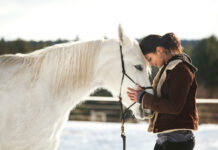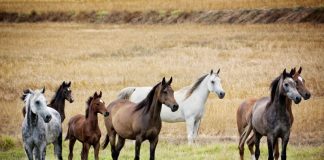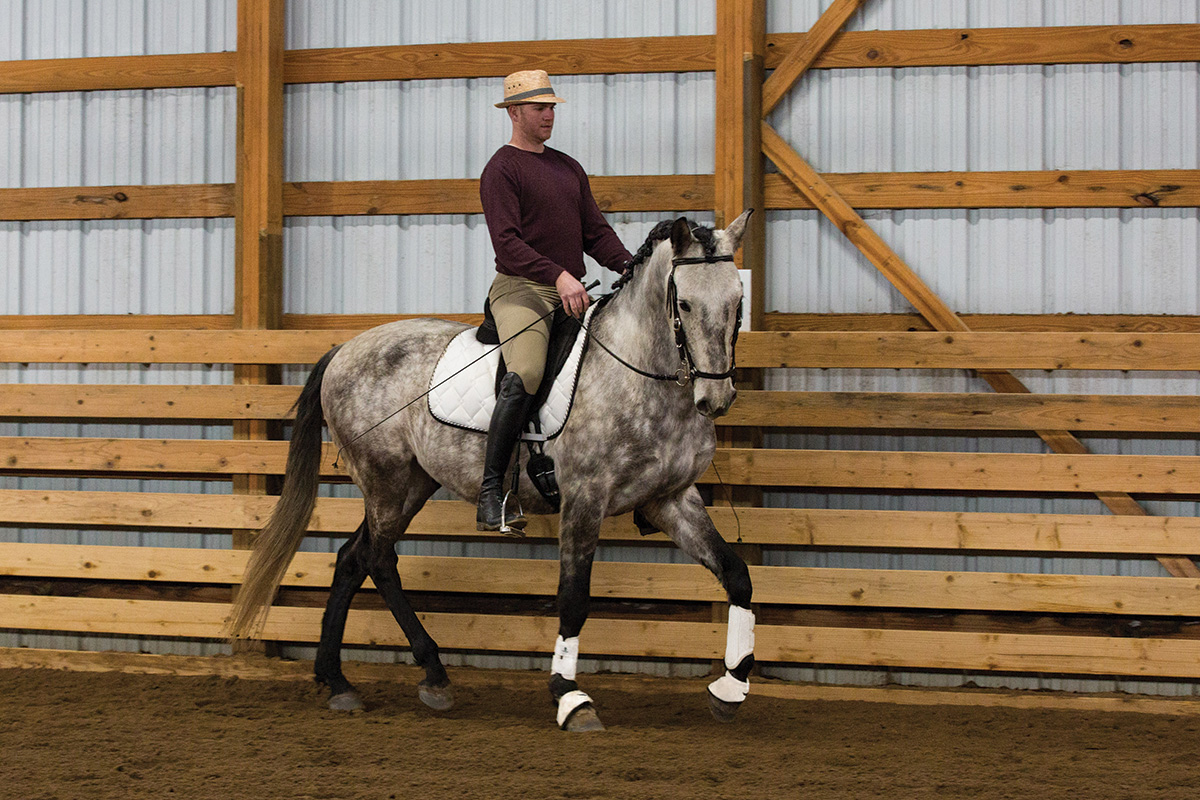
You’ve heard horse owners evaluate rides and their horse’s behavior as they hop off, maybe something like: “He was such a goof today.”
Here, we talk to dressage trainer Cody Harrison to find out how you can move from blaming your horse for acting out to becoming a behavior investigator. Harrison is based in Brighton, Colo., and teaches riders to work as partners with their horses at his clinics and lessons.
He says horses may act out and have poor behavior if they aren’t comfortable in the current environment, if they don’t understand what’s being asked, or if they aren’t physically capable.
Good Vibes Only
“Ask yourself what your horse needs from you and what he is trying to teach you,” Harrison says. “Try to see it all as a learning experience rather than good and bad rides. Every time you interact with your horse, you are either training him or un-training him.”
It’s impossible to blame the horse and wonder why something happened at the same time. After acknowledging that horses aren’t out for revenge, your perspective shifts from blame to curiosity. Harrison encourages riders to be responsible for emotions or negativity they may bring to rides and to arrive at the barn with a relaxed mindset.
“You have to understand why your horse is doing things and how he thinks,” Harrison says. “The horse does not do things to intentionally irritate you. Everything a horse does is in response to a stimulus or a response to his own thoughts, but it’s not to spite you. If the horse isn’t comfortable in his environment, doesn’t understand, or isn’t physically capable of the move he’s being asked [to perform], he can’t be successful.”
Environmental Concerns Affect Horses’ Behavior
Harrison says many riders are quick to blame their horses for having poor behavior in new environments. With many new things bombarding their senses, horses are on guard.
“If a horse is scared of a new sound at an expo or large show, remember that it’s overstimulating,” Harrison says. “He can learn to act differently. One of the biggest ways to get his trust in those situations is to not get after him. Think, ‘Let me walk you through this and help you through this.’”
Your horse will feel your intent to guide rather than correct. As you’re working in new environments, Harrison advises looking for places where your horse is comfortable and staying there until it feels safe to move on.
“If you’re in a new arena, find where the horse is most comfortable—probably near the gate—and work there instead of going down to the other side right away. Work where the horse feels safe for a while, then push the boundaries until you can ride in more and more of the arena while your horse stays calm and relaxed. By not pushing the horse, you build his comfort and trust in you. If you push the boundaries, it can create a lack of trust. Forcing a horse into a situation—even if you get something accomplished—will mean you’ll have an argument each time.”
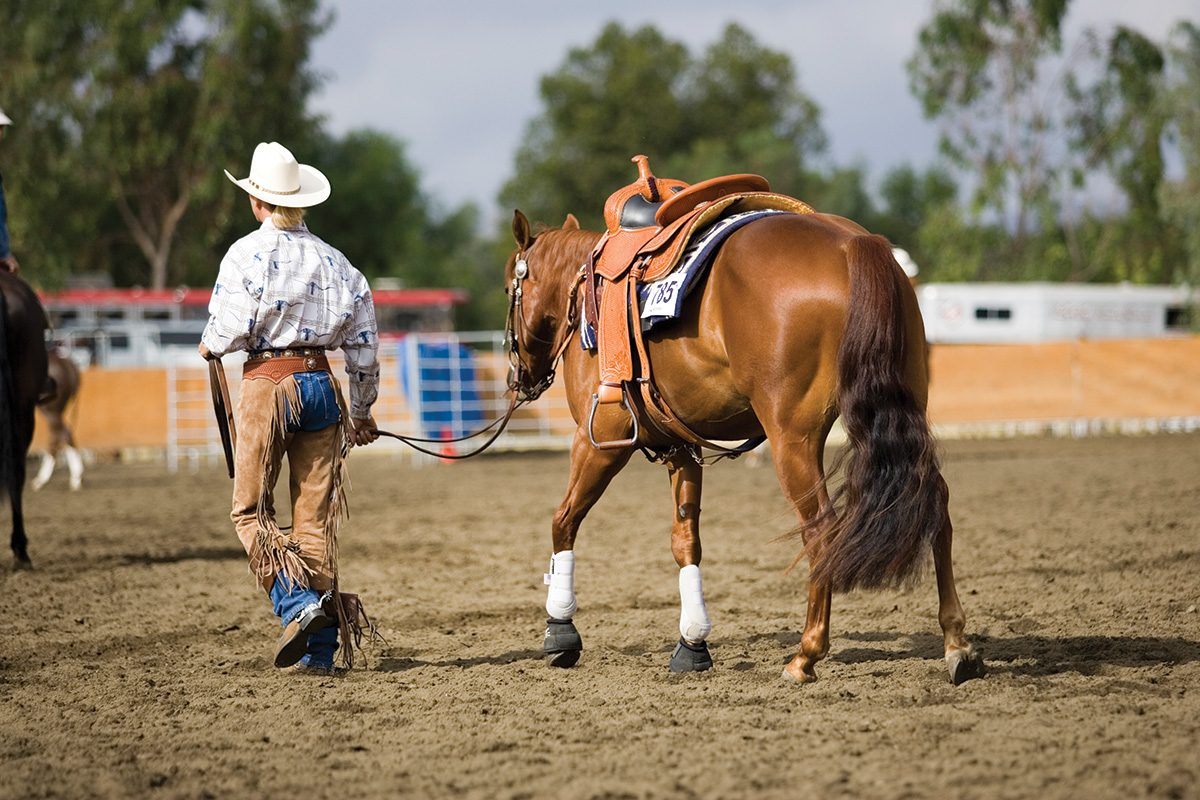
Does this softer approach work all the time? Harrison says he has a 95 percent rule: Looking for where your horse will be calm and talking him through will work 95 percent of the time.
“Ninety-five percent of the time, we want to be very light and encourage the horse,” he says. “But if you need to protect yourself, or say a small child runs in front of your horse, you may have to use more pressure. Still, be aware of how much pressure the horse can take in any situation. There are certain horses that will never take extreme pressure, just like there are certain people that can’t take that.”
Beyond Understanding
If the horse doesn’t understand what he’s being asked to do, the rider will often think he is being naughty. Harrison says horses will be resistant when they don’t understand.
“The horse starts guessing but gets in trouble because he isn’t getting the right answer,” he says. “So you end up applying more pressure instead of simplifying the exercise. It’s very important to make sure that any exercise you do is a spin-off of an exercise your horse already knows well. When exercises connect to each other, that helps the horse. If your horse knows leg-yields well, then move on to shoulder-in. Those moves are related. But even before leg-yields, make sure your horse can bend through his whole body and step underneath himself. All skills should build to help the horse understand.”
It’s Not Horse Behavior, It’s a Physical Block
Make sure not to ask the horse for more than he can physically do. If you do, he’ll resist. It’s not the horse’s fault if he physically can’t do what is asked.
“When people come into a clinic and I see that the horse is really lean or is a hard keeper, that’s a good clue that the horse may not be physically capable,” says Harrison. “If someone says they want to work on collection but the horse doesn’t have a developed topline, they’re not going to get there without lots of work first.”
Harrison recommends riders work at the trot to improve conditioning issues. The even movement gets horses moving well.
Consider the strength and fitness of older horses. Harrison says he often sees horses who once could do complex moves get asked to repeat what they aren’t in shape to do. If horses know the cues but can’t physically perform, they’ll get sore, and some riders end up blaming the horse.
Rider Responsibility
Harrison says you must consider what emotions and attitude you bring to each ride.
“It’s very important that you understand what your energy level and your day was like before you get on,” he says. “If you had a bad day at work, you’re still at work and not present with your horse. If you’re irritated, then nothing is going to be good enough. Anytime you don’t have control of your emotions, it’s going to affect your horse. As you’re driving to the barn, breathe and meditate a little. Bring yourself back to neutral.”
How can you train yourself to figure out what’s going on with a horse instead of blaming?
“I was taught in ways to make the horse do something,” says Harrison. “It never felt good after I accomplished it. It felt like domination instead of refined. It made me want to do things differently and to look for different ways.”
Harrison says he makes sure to build comfort into his lessons.
“There are moments we stop and figure out what’s going on,” he says. “All my students know that when I tell you to do a circle at E, it doesn’t have to be exactly at E, but somewhere near E. I want riders to do the circle when their horse is balanced and ready. The horse keeps trusting you. When trust develops, then you can be more specific about getting the circle precisely at E in the correct gait.”
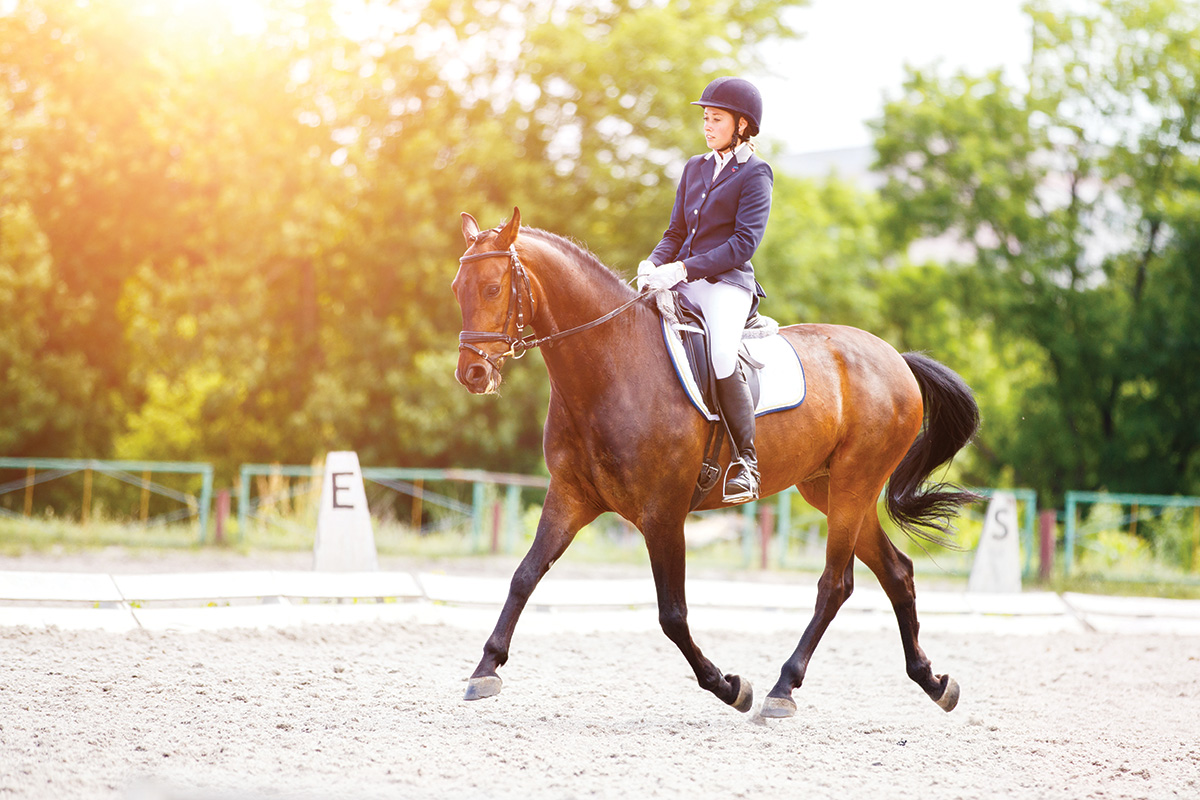
Changing how you word your thoughts and frame your training sessions can change the presence you have with your horse—and your relationship with him. Notice if he is comfortable in his environment, if you’re giving clear cues, and if he’s physically able to do what you ask. If those three elements align, you won’t have to blame your horse.
Dealing with Failure
Failure is often inevitable, but what matters is how we deal with failure. In this video from Ridely, expert Mind Coach Annette Paterakis explains how you can deal with failure by redefining it to help you get better.
Annette explains that, where we put our focus is where we are going to go, so focusing on failure by redefining it as a learning opportunity will help us improve in the long run.
Register for Ridely PRO to access 450+ other useful training videos.
This article about factors that affect horse behavior and bad rides appeared in the September 2022 issue of Horse Illustrated magazine. Click here to subscribe!



